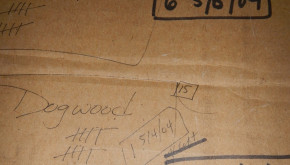
In the spring 2012 issue of Northwest Woodlands, Scott Hayes asks: “How old is your [forest management] plan?” He writes: “Whatever a person’s reason for owning forestland, writing and following a good management plan is worth it.” Hayes, the president of Oregon Small Woodlands Association, encourages woodland owners to revisit forestry plans, particularly when they are written many years ago and may need to be revised.
I agree. My parents wrote their plan about twelve years ago. In the scheme of a forest, it’s not that long ago, but in the scheme of the changes in our family and activities performed on our land, it’s a long time ago. Plus, as Hayes suggests, “following a good management plan” means revisiting and revising that plan.
A good management plan does not focus on one item or one goal, but is a series of steps leading to a goal or to several goals. For example, among other items, we manage for forest health and wildlife habitat. Sometimes forest health may mean that we need to perform a regeneration cut, which may mean reduced cover for little critters. Our goals often remain the same, but the strategies to reach those goals may need to change.
But what I want to stress about revisiting management plans is the habit of keeping good records along the way. Then when you revisit your management goals, you’ll have a sense of what has and has not been completed, what strategies have and have not worked, and what plans need to be shelved altogether and/or replaced.
My first step is to collect all the notes I’ve made about our forest. I’m a note keeper, but I’m not an organized note keeper. In other words, I have failed at the very advice I’m giving: keep good records so you can revisit your plan! I write notes on napkins, envelopes, and inside book covers. I write notes and stash them in the top drawer in the bathroom next to the toothpaste. I wrote the numbers and kinds of seedlings planted on the edge of a box and tacked the cardboard to the wall, which has stayed on the wall for years, waiting for me to transcribe it into our logbook. Oh dear.
Over two years ago, I wrote notes about a consulting forester’s visit inside my private journal—Mike Wolcott’s suggestions for what to do about the ox eye daisies, which were taking over our pasture, and a few of our western cedars, which were dying. Where is that private journal now? Talk about organized disorganization.
My mother established our management plan, and it was her efforts that led to our designation as an Idaho stewardship forest. It’s time for my dad and I to revisit the plan, but where to begin? How to do it without my mom, who passed away in 2010?
As my dad and I revisit the big picture over the next year, our plan is to start small. First, I need to gather all the information. Our thought is to take it one step at a time, to keep notes, but definitely to proceed. One tree at a time might be too ambitious, but it was always my mom’s goal to know every single tree on our land.

